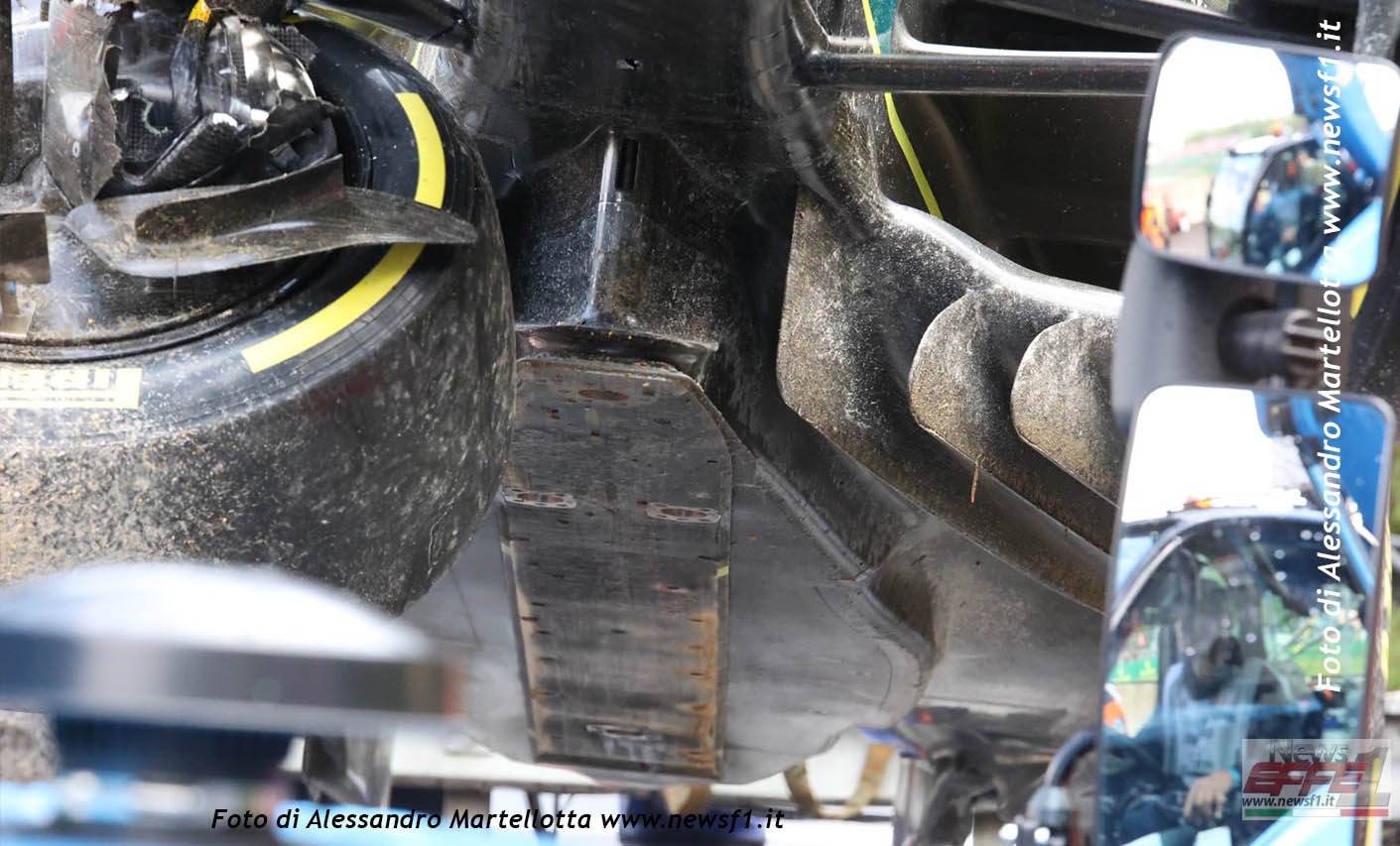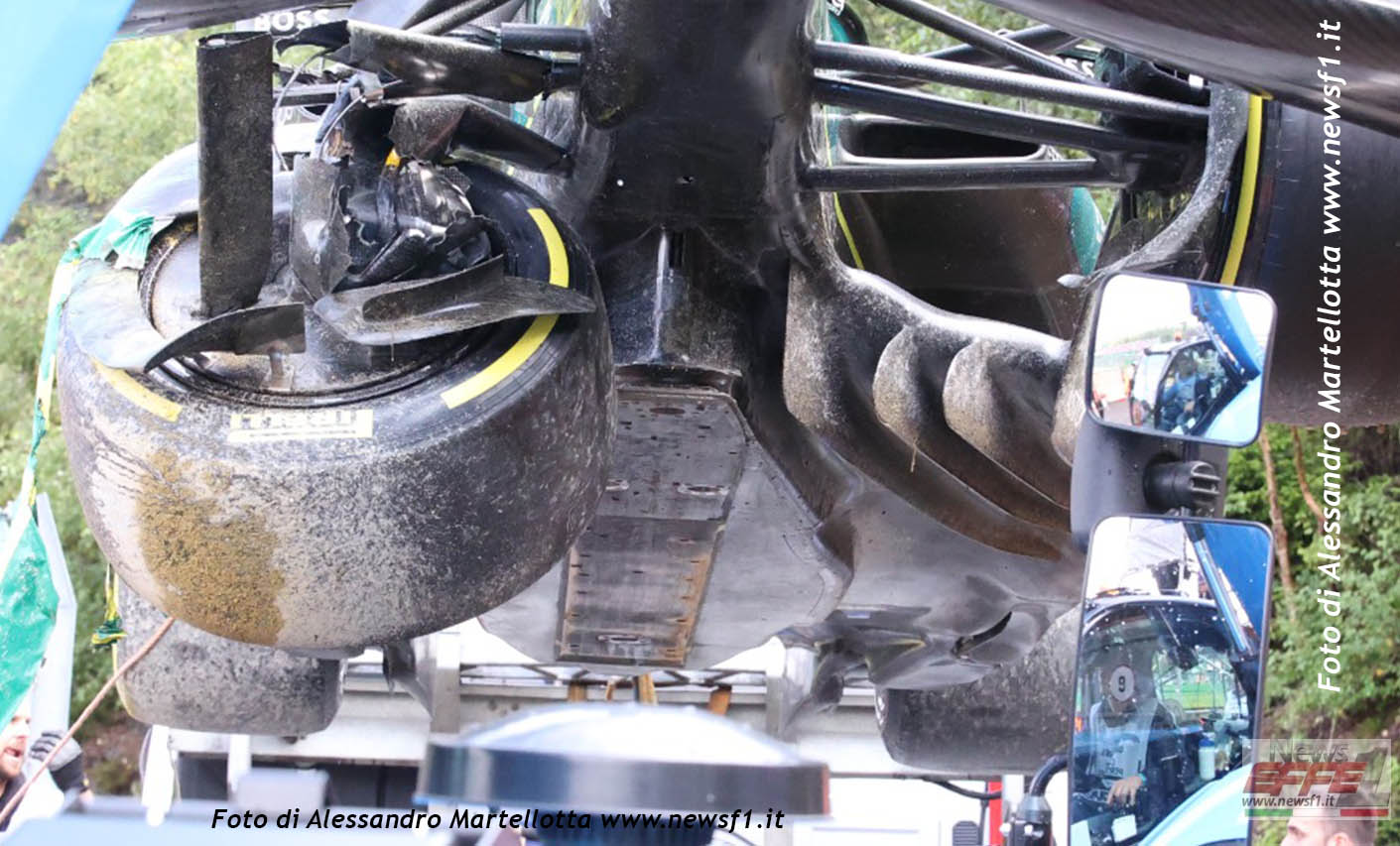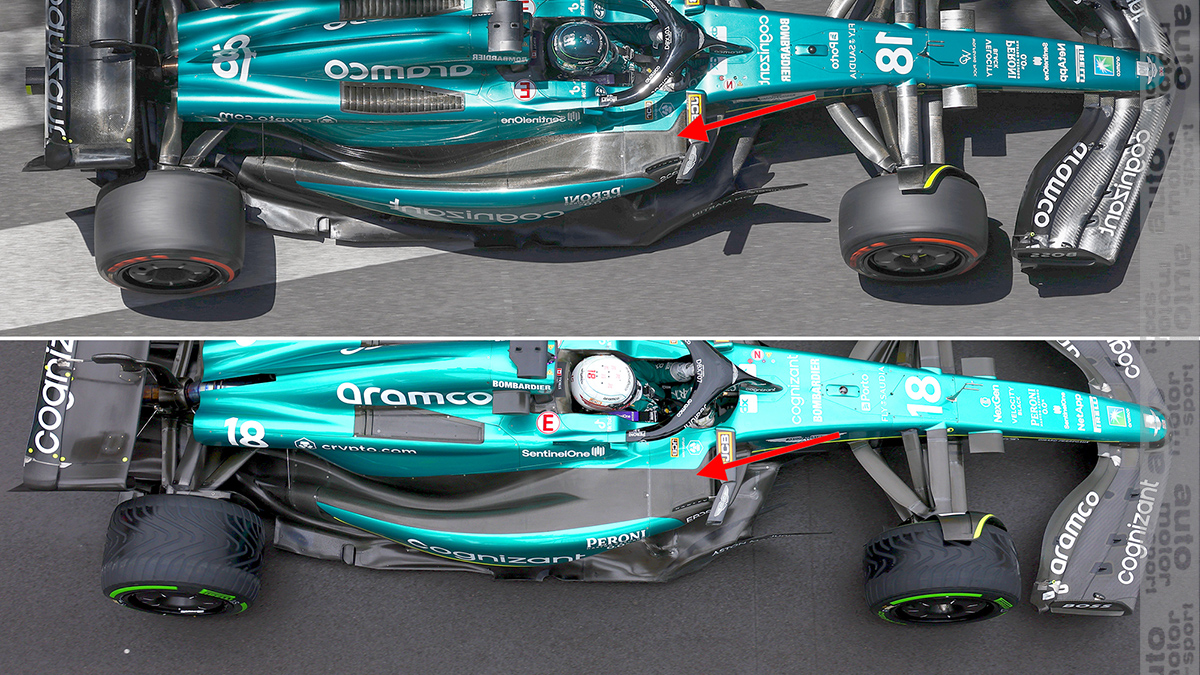AR3-GP wrote: ↑06 Sep 2023, 04:16
This is a very crude drawing, but to me deep tubs should lead to more drag than no tub. The back face of the Aston tub is generating low pressure and that force is acting on a surface whose normal vector has a greater horizontal component than that of the RB design. So that is why I suspect it's inherently draggier.
Of course there are many other things going on like wheel wakes in front of the rear tire, but both cars achieve some form of rear tire management by virtue of the wide sidepod, so the only difference is the presence or lack of the tub. A RB style sidepod to me should generate more lift (less drag), and an Aston tub pod generates more drag (less lift).
https://i.postimg.cc/prJvFyhN/image.png
This actually tracks somewhat with the known qualities of each of the cars in Bahrain.
What about the air flowing through the radiators, down the underside of the water slide and inside the sidepod?
This air goes somewhere. The water slide just about follows the contour of the rad. The air will be blocked from flowing to outside, it will be forced to the center past the exhaust.

If you look down past the side impact structure, you can see the line of the floor dropping down towards the plank, not all the way obviously. That is reinforced by these pictures ...



You can see the skate at the back. That is where the floor is starting to rise again. The skate is positioned where the first red arrow pointing up from the left is in this picture.

Now that we know where the skate is and where the floor reaches the lowest point... In this picture, you can see where the water slide coincides with the floor reaching each lowest point. Many things going on at the same time.

With regards to the water slides. I think that at a certain speed the airflow flowing over the top of them is flowing faster that the contents and creates a seal, turning the water slide into a venturi. They then use the lower sections of the venturi to pull the air in. I'm Programmer, not a aerodynamics.









